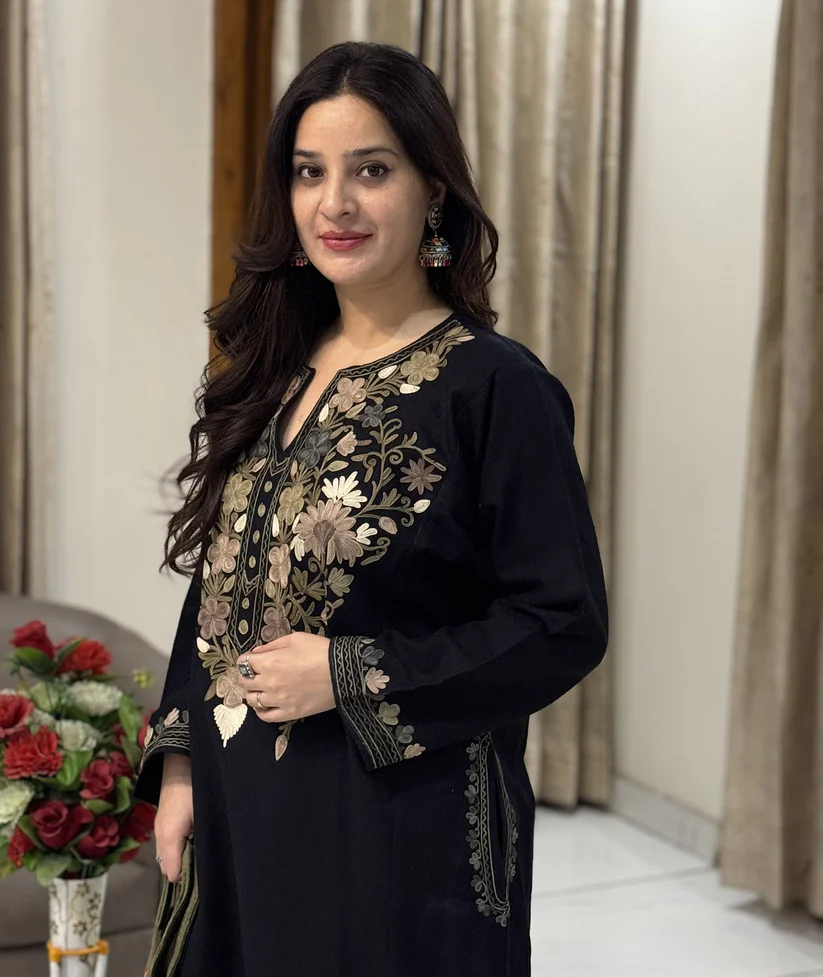

For us Kashmiris, the Pheran isn’t just a piece of clothing—it’s something we’ve lived in, grown up with, and cherished for generations.
I remember how, back in the day, our mothers would make a trip to the markets in Goni Khan or Lal Chowk, picking out the perfect fabric for our pherans. Once the cloth was chosen, it was taken to the neighborhood tailor to be stitched. To make it extra cozy, they would add a lining called pochz to trap the warmth.
Winters in Kashmir were never complete without our pherans. Of course, there were the inevitable accidents—burn marks from the kangri (the portable fire pot we carry underneath our pherans) or rips from getting caught in bicycle spokes. But no matter how many times the pheran got singed or torn, it was still the most comfortable thing we could wear in the bitter cold.
The real blessing of the pheran is how easy it makes life during the long, harsh winters. You never have to worry about what’s underneath—whether it’s an old sweater or a worn-out t-shirt, the pheran covers everything. And the best part? It doesn’t need frequent washing; once or twice in the entire winter is usually enough to keep it fresh.
Of course, in the ’90s, wearing a pheran came with a certain risk. The security forces would sometimes view people wearing pherans with suspicion, making it a garment of fear during those troubled times. But after the 2000s, things slowly began to change, and the pheran was once again embraced as a symbol of our identity.

Today, pherans have found a new place in our timelines. Scroll through Instagram, and you’ll see everyone from politicians like Omar Abdullah to tourists showing off their pherans in photos and reels. Sellers have even started using foreign models to make the garment more appealing to a wider audience.
Ready-made pherans are now the norm—people no longer have the time or patience to get one custom-stitched like in the old days. These days, you can buy pherans online from countless shopping sites, or even find them in stores outside Kashmir. Lajpat Nagar in Delhi, for example, has pherans hanging in shop windows, with non-local sellers marketing them to a new audience. During the Delhi winters, you might spot a few people wearing budget cashmilon pherans, mostly women, embracing a bit of Kashmiri warmth.
Whether it’s attending a family function, paying respects at a funeral, or just hanging out with friends, the pheran fits in anywhere. I still remember walking to tuitions in Parraypora or Hyderpora wrapped in my pheran. It was like a warm hug that stayed with me all day, making even the coldest mornings bearable.

In winter, Kashmir transforms into a sea of pherans. Walk through Batmaloo Market or Makkah Market, and you’ll see rows of cheap pattu pherans for sale. Head over to Khanqah or Eidgah, and you’ll find beautiful tilla-embroidered pherans, handmade with care. In areas like Noorbagh, Lal Bazar, or Hawal, you’ll find families who stock up on pherans, selling them from their homes when the cold sets in. And in Bagh-e-Ali Mardan, factories hum with the production of machine-made pherans, churning them out in bulk for the winter season.
Mehr's Poshak is proudly powered by WordPress